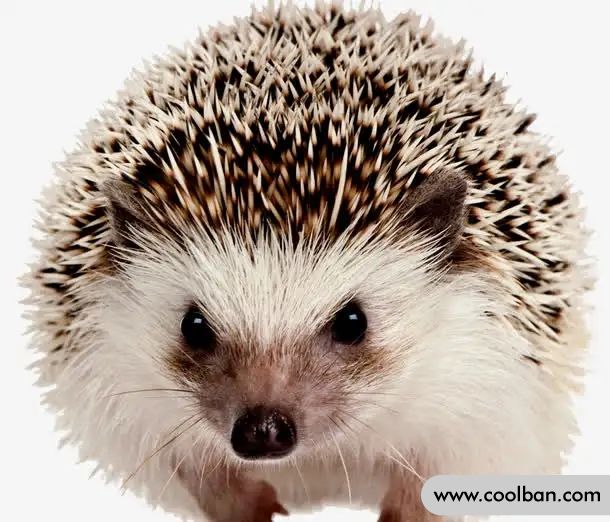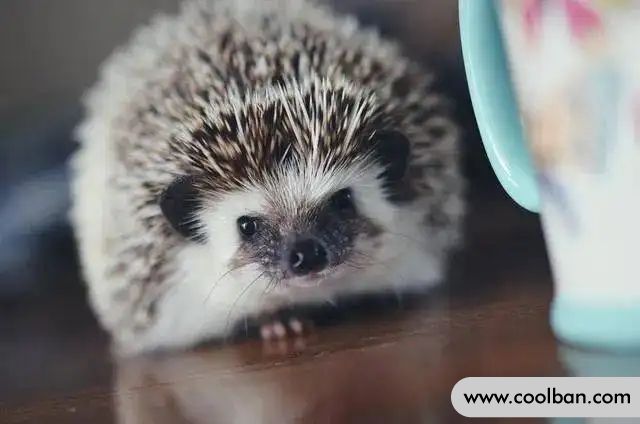6 Tips for Raising Miniature Hedgehogs
The miniature hedgehog as a pet is bred from a cross between a common hedgehog and an African "four-toed hedgehog". They do not hibernate, are small, and are not hardy. African miniature hedgehogs, also known as four-toed hedgehogs, are small in size with white or cream-colored fur on the abdomen and face, with white spines mixed with black or coffee; the face may have a darker color like a mask. The lower part of the foot also usually takes on a darker color. The height of the ears is shorter than the length of the spines, and they are covered with hair. As its common name suggests, unlike related species, four-toed hedgehogs typically have only four toes on their feet and no big toes. However, in some hedgehogs, there may be a small bony lump in the big toe, or there may even be a well-developed toe, especially on the hind feet. You're going to love these little guys, they're adorable as they stumble around and poke their noses.

How to raise a miniature hedgehog
Feeding point 1: Mini hedgehogs are nocturnal animals, sleeping during the day and active at night. They are usually 7pm to 10pm Most active before o'clock. So the breeders let the hedgehogs rest well during the day and play with the hedgehogs at night. Random changes in the habits of nocturnal animals can easily lead to short lifespans. Because it is their instinct to hide in the dark, they think the only way to feel safe is in the dark.
Feeding point 2: Cover the bottom of the hedgehog cage with wheat straw, hay, sawdust or thin newspaper strips. Feeding bowls can be made of earthenware, preferably heavier. Provide some twigs for gnawing to prevent the teeth from growing too long. Breeding boxes can be made of wood or paper, etc., or you can buy finished cages. Then place it in a hedge-sized log cabin or covered box as a resting and sleeping home for your miniature hedgehog. Hedgehogs are solitary animals and may harm each other if kept together.

Feeding point 3: The drinking water for feeding can be supplied with a drinker, installed at a height that is easy to drink, and filled with water in a utensil-type water tank. Hedgehogs have the habit of excreting in a fixed place. Put a potty in the place where it often excretes, and put cat litter in it, which can be used as a toilet. Don't force it if you don't go to the toilet, and pay attention to cleaning the cage frequently.
Feeding point 4: Mini hedgehogs are omnivores and partial carnivores. You can feed them dog food, cat food, mealworms, crickets, etc. Miniature hedgehogs have a keen sense of smell. When bathing and caged miniature hedgehogs, you can't use scented body washes and cleaning products, but unscented ones. pet cleaner. In addition, miniature hedgehogs are easy to gain weight, you can buy a roller to make them move more.

Raising point 5: In hot summer, the temperature in the breeding box is easy to rise, it is best to move it to the cage, put the cage in a well-ventilated place, and be careful not to expose it to direct sunlight. Don't forget to check the breeding box frequently in winter to prevent the miniature hedgehog from dying due to low temperature. The suitable temperature for miniature hedgehogs to survive is 15-25 degrees.
Feeding point 6: Wet, high humidity can cause miniature hedgehogs to grow lice. Most will appear behind the ears, or between the spines. When you just buy it, you can pay attention to whether there are small white spots on the thorn tips. The sign is that the miniature hedgehog will scratch constantly. Of course, a normal scratch or two doesn't mean he has lice. You can prepare a dark or black cloth, wrap the miniature hedgehog, and take the hedgehog out to look at it. The white spots on the cloth may be dead skin, but if they move they are lice, which means the lice won't jump. If there are lice, it is recommended to use a lice spray, taking care not to get in the eyes when spraying.
